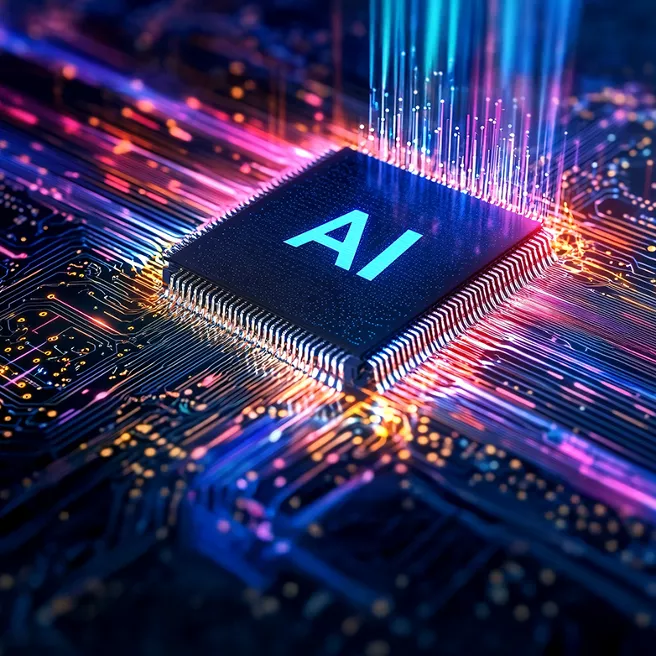Space, the final frontier. For centuries, humankind has gazed up at the night sky, pondering the mysteries of the universe. From the first flickering lights of ancient civilizations, which saw stars as gods or omens, to the sophisticated telescopes and space missions that now extend our reach beyond the farthest corners of the cosmos, the fascination with space has never waned. But in the present day, as technology has advanced by leaps and bounds, space exploration has entered a new, unprecedented era—one where the boundaries of possibility are being pushed faster than ever before.
Today, space is not just a realm of scientific curiosity but a critical arena for technological advancement, geopolitics, and human survival. With a growing interest in returning to the Moon, sending missions to Mars, and even mining asteroids, the future of space technology promises to be both awe-inspiring and revolutionary. This journey into the future of space exploration and technology will reveal not only the cutting-edge technologies shaping the cosmos but also the human spirit of exploration and innovation that propels us into the stars.
The Dawn of a New Space Age
We are at the cusp of what many are calling the “New Space Age,” characterized by the entry of private companies into space exploration. For decades, space exploration was the exclusive domain of government agencies like NASA, the Russian Federal Space Agency (Roscosmos), and the European Space Agency (ESA). However, the rapid development of private space companies such as SpaceX, Blue Origin, and Rocket Lab has drastically altered the landscape of space exploration.
SpaceX, in particular, has been a trailblazer in this new space race. Founded by Elon Musk in 2002, SpaceX’s achievements include the development of the Falcon series of rockets, the Dragon spacecraft, and the successful landing and reusability of their rockets—a feat once thought impossible. The reusability of rockets has brought down the cost of launching payloads into space, making space more accessible than ever before.
Revolutionizing Space Travel: Reusable Rockets
One of the most significant advancements in space technology has been the development of reusable rockets. The idea of reusable spacecraft is not a new one, but until recently, it was considered an expensive and impractical dream. Traditionally, rockets were single-use, meaning they would burn up upon reentry or fall into the ocean after launching their payload. This inefficiency drove up costs and limited the frequency of space launches.
SpaceX’s Falcon 9 rocket, however, has proven that reusable rockets are not only feasible but also economically viable. The Falcon 9’s first stage is capable of landing back on Earth after launching its payload, where it can be refurbished and flown again. This innovation has dramatically reduced launch costs and allowed for a far greater frequency of space missions. The success of reusable rockets paves the way for a new era in which space travel may become commonplace, not just for astronauts, but for tourists, businesses, and researchers alike.
Blue Origin, founded by Amazon’s Jeff Bezos, has also contributed to this revolution with its New Shepard rocket, which is designed for suborbital flights. New Shepard’s success demonstrates the potential for tourism, research, and commercial activities to thrive in space at more affordable prices.
As more players enter the space sector, the cost of getting into orbit will continue to decrease, potentially opening up a floodgate of possibilities. With cheaper launches, businesses can set up satellites more efficiently, and governments can fund more ambitious missions to the Moon, Mars, and beyond.
The Race to Mars: Colonizing the Red Planet
When we talk about the future of space exploration, one of the most exciting frontiers is Mars. The prospect of sending humans to Mars has captured the imagination of scientists, engineers, and dreamers for decades. NASA’s Artemis program, which aims to return humans to the Moon by the late 2020s, is seen as a stepping stone for Mars missions. However, private companies like SpaceX are already ahead of the game, with ambitious plans for Mars colonization.
Elon Musk’s vision for Mars is one of the most audacious and exciting. SpaceX’s Starship, which is currently under development, is a fully reusable spacecraft designed to transport large numbers of people and cargo to the Moon, Mars, and beyond. Starship is intended to be the vehicle for Musk’s grand vision of establishing a self-sustaining colony on Mars, which he believes is essential for the long-term survival of humanity.
The challenges of sending humans to Mars are enormous. The journey to Mars, which takes roughly six to nine months, requires advanced life-support systems, radiation protection, and reliable propulsion technologies. Once on Mars, astronauts would need to survive in an environment that is harsh, barren, and lacking in breathable air or liquid water. They would have to rely on advanced habitats, closed-loop ecosystems, and methods to produce food and oxygen.
But these challenges are not insurmountable. Scientists are already working on technologies such as 3D printing for creating habitats on Mars, extracting water from the Martian atmosphere, and even developing sustainable energy sources like nuclear and solar power. SpaceX and NASA’s focus on testing life support systems, artificial intelligence for autonomous operations, and advanced propulsion technologies will ensure that, within a few decades, a human presence on Mars becomes a reality.
The Moon: A Gateway to Deeper Space Exploration
While Mars remains the ultimate goal, the Moon is considered a vital stepping stone in the exploration of the solar system. NASA’s Artemis program aims to land the first woman and the next man on the Moon by 2025, with plans to establish a sustainable presence on the lunar surface by the 2030s. The Moon, with its proximity to Earth, offers a unique opportunity to develop the technologies needed for deeper space exploration, including missions to Mars.
The Moon also holds promise as a resource-rich body. For example, the lunar surface contains vast quantities of water ice in permanently shadowed craters, which could be used for drinking water, oxygen, or even converted into hydrogen and oxygen to fuel rockets. The Moon also contains helium-3, an isotope that could be a potential fuel source for future nuclear fusion reactors. Mining these resources could provide a sustainable means of supporting long-term space missions, creating a new economy in space.
Advancements in Space Propulsion
As we look to the future, one of the most critical challenges for space exploration is propulsion. Traditional chemical rockets, while powerful, have limitations in terms of speed and efficiency. To explore Mars and beyond, we need faster and more efficient propulsion systems that can reduce travel time and increase payload capacity.
One promising area of research is nuclear propulsion. Nuclear thermal propulsion (NTP) uses nuclear reactions to heat a propellant, which is then expelled through a rocket nozzle to produce thrust. This technology could potentially reduce travel time to Mars from nine months to just three or four months, a significant improvement that would make missions much safer and more practical.
Another exciting development is electric propulsion, which uses ionized gases accelerated by electric fields to produce thrust. While electric propulsion systems are much slower than traditional chemical rockets, they are incredibly efficient and ideal for long-duration missions, such as those to the outer planets or deep space.
Other futuristic propulsion technologies being explored include solar sails, which use the pressure of sunlight to propel a spacecraft, and fusion propulsion, which harnesses the power of nuclear fusion to provide nearly limitless energy for interstellar travel.
Artificial Intelligence and Autonomous Space Exploration
As we venture further into space, the challenges of communication, navigation, and decision-making become more complex. A key component of the future of space technology will be artificial intelligence (AI). AI can help spacecraft navigate autonomously, make real-time decisions, and even assist with scientific research.
AI is already being used in robotic space missions. NASA’s Perseverance rover, which landed on Mars in 2021, uses AI to autonomously navigate the Martian terrain and make decisions about where to go next based on its surroundings. AI systems can also help with analyzing data collected from distant planets, moons, and asteroids, enabling faster and more accurate scientific discoveries.
In the future, AI could play a critical role in the management of space habitats, both on the Moon and Mars. Autonomous robots could be tasked with maintaining spacecraft, habitats, and mining operations. They could also help with tasks such as 3D printing structures, building infrastructure, and even conducting repairs without human intervention.
Space Tourism: Opening the Final Frontier
As space exploration becomes more accessible, space tourism is rapidly emerging as a new industry. Companies like Blue Origin and Virgin Galactic are already offering suborbital flights, allowing civilians to experience weightlessness and see Earth from space. These flights are a taste of what’s to come—a future where space tourism becomes a mainstream activity.
The development of commercial space travel could soon lead to fully orbital hotels, space cruises, and even lunar vacations. With advancements in spacecraft technology and the reduction of space travel costs, it’s conceivable that in the coming decades, space will be accessible to a much larger portion of the population.
Space Mining: A New Frontier for Resources
Another area poised for explosive growth is space mining. The idea of extracting valuable minerals, metals, and resources from asteroids, the Moon, or even Mars has long been the stuff of science fiction. However, with the development of advanced robotics, AI, and space transportation technologies, asteroid mining may soon become a reality.
Asteroids are rich in rare metals like platinum, gold, and nickel, which are in high demand on Earth. Some asteroids also contain water ice, which could be used to support space missions. Mining these resources could reduce our dependence on Earth-based resources and pave the way for a sustainable space economy.
Companies like Planetary Resources and Deep Space Industries are already working on technologies to mine asteroids. While challenges remain, such as the cost of launching mining equipment and developing viable mining techniques, the potential for space mining is vast, both for profit and for sustaining future space exploration.
Conclusion: The Infinite Possibilities Ahead
The future of space technology is brighter than ever. As we stand on the threshold of the next era of space exploration, the possibilities are truly infinite. With the rapid development of new technologies, the cooperation between governments and private companies, and the unyielding spirit of human curiosity, we are on the verge of unlocking the secrets of the cosmos and taking our place among the stars.
The journey ahead will be challenging, filled with obstacles and setbacks. Yet, it is a journey we must take—one that will test the limits of our technology, our resilience, and our imagination. Whether it’s the exploration of Mars, the commercialization of space travel, or the establishment of colonies on distant planets, the future of space technology is not just about discovering new worlds, but about shaping the future of humanity itself.
As we venture deeper into space, we will learn not just about the universe but also about ourselves—our ability to innovate, to collaborate, and to dream beyond the confines of our home planet. The stars are calling, and humanity is ready to answer.






